The sun reaches the north-facing windows for a couple of hours a day. For some plants, this is harmful! They begin to stretch out, grow poorly, lose color, and hardly ever bloom. However, there are green pets in the category of north-facing window plants that adore shade. If your home has little light and you're wondering what plants are best for north-facing windows, here's a list of the plants and their features.
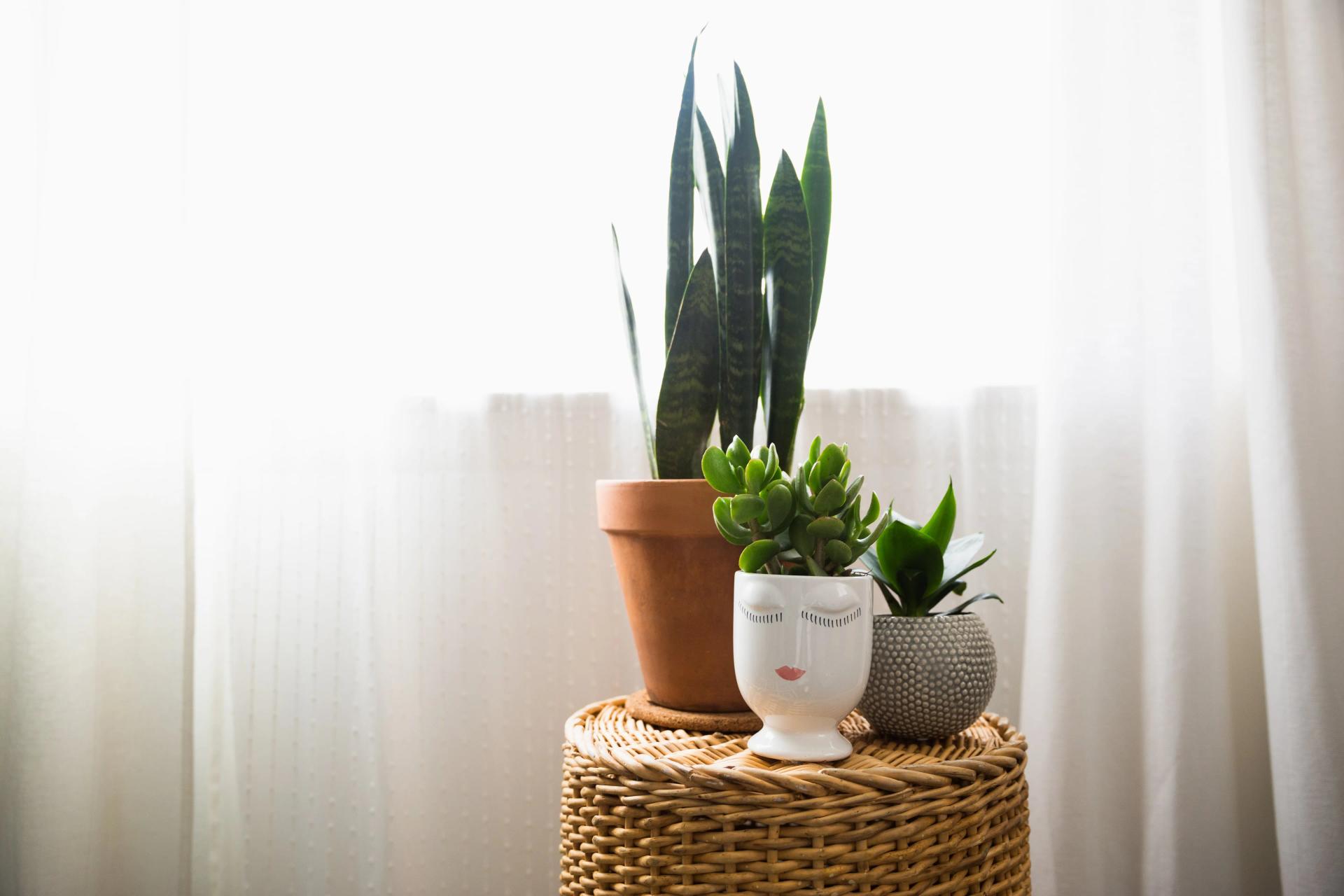
What Are North-Facing Window Plants?
North-facing window plants prefer a shadier and cooler side of the house. In their natural environment, these kinds of plants thrive in the shade, like the damp forest floor under the canopies of trees. If a certain greenie receives little sun in its natural habitat, it's likely to prefer the same conditions when grown indoors.
Can Plants Survive on the North-Facing Side?
Yes, some plants prefer low-light conditions. They don't lose their ornamental qualities or get sick without bathing in the sun. These plants often enjoy partial or full shade. Low-light plants are tough! Just take a look at succulents with their thick moisture-retaining leaves.

Window Size
If your north window is small, then this window needs hardy plants. In this case, placing all the plants on the windowsill is better so they will get a minimum amount of light; even the hardiest of the low-light plants may struggle from the lack of sun exposure.
If the windows are big, you can try to place green friends around the room, but be careful and watch them for some time. If you see that they are not feeling good, consider placing them on the windowsill or getting additional artificial light.
Temperature
The temperature in a given window can be very different from that in a room. In winter, the space near a north window is colder than a room — the sun does not heat the window, and cold air penetrates through the slots. In summer, the temperature becomes stable, perfect for the plants!
Seasons
Spring and summer light days are longer. Even though the light never looks in the north window, it gets reflected and scattered — perfect for many plants that do not like direct sun rays. In summer, it is possible to move Ficuses to the north side, excellent leafy ones, such as the Ficus Benjamina. If you have a balcony to the north side, this place is ideal for most domestic plants in the summer. Petunia will bloom on it as well as Pelargonium; we also recommend Phoenix Palm and Anthurium.
When winter comes, all the plants are out of the light, not to mention the plants that grow on the north side. This problem can be easily solved with a few daylight bulbs, prolonging the “light day” and benefiting the plants.
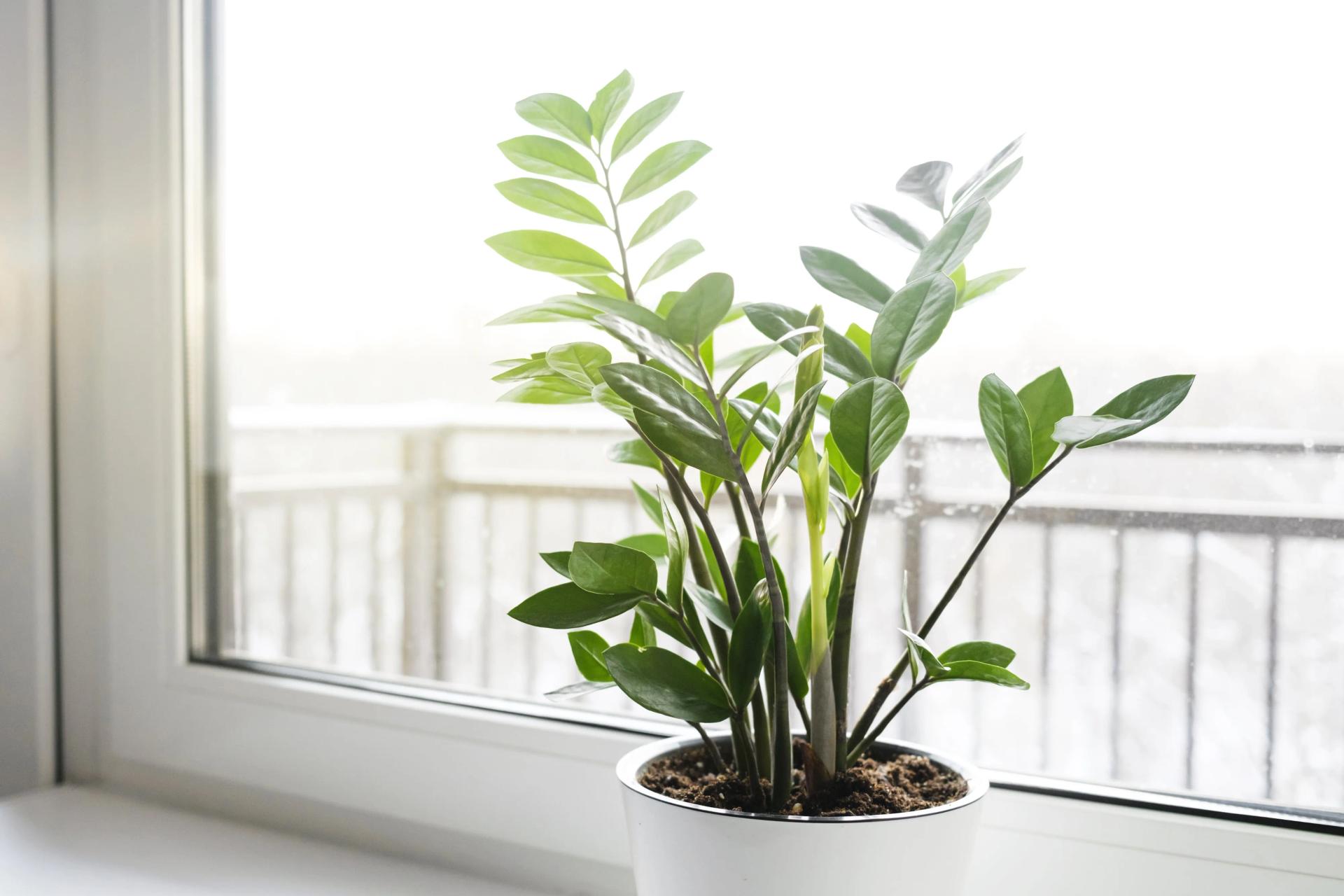
List of Plants for the North Window
Are you ready to invite some shade-loving greenies to your home? We have made a list of some remarkable candidates!
Laceleaf, Tailflower
Botanical name: Anthurium spp.
Description: This lush and graceful plant attracts flower growers with its arrow-shaped leaves and bright bracts.
Difficulty: Normal.
Water requirements: Anthurium needs to be watered about once a week. It's best to use tepid soft water. The potting mix should be kept moist at all times!
Light requirements: Laceleaf can be placed next to a north-facing window. It normally needs medium indirect light since direct sun rays will scorch the foliage.
Temperature & Humidity: Humidity should be kept at medium level. Once in a few days, Anthuriums enjoy some misting. Laceleaf plants prefer temperatures around 78 to 90°F (25-32°C).
Tips: Even though Anthurium doesn't need much sun, you should protect it from significant temperature drops and drafts.

Bar-Room plant, Cast-Iron plant
Botanical name: Aspidistra spp.
Description: Aspidistra is incredibly stylish and unpretentious in care. These plants are famous for their lush lanceolate-shaped leaves with sharp tips.
Difficulty: Easy.
Water requirements: Aspidistra needs to be watered about once a week.
Light requirements: A Cast-Iron plant quite enjoys a dark corner next to a north-facing window. Too much sunlight can harm it!
Temperature & Humidity: Aspidistra feels most comfortable at the temperature range of 45-85°F (7-29°C). It's recommended to maintain it at moderate humidity.
Tips: These tough greenies usually don't need fertilizing!
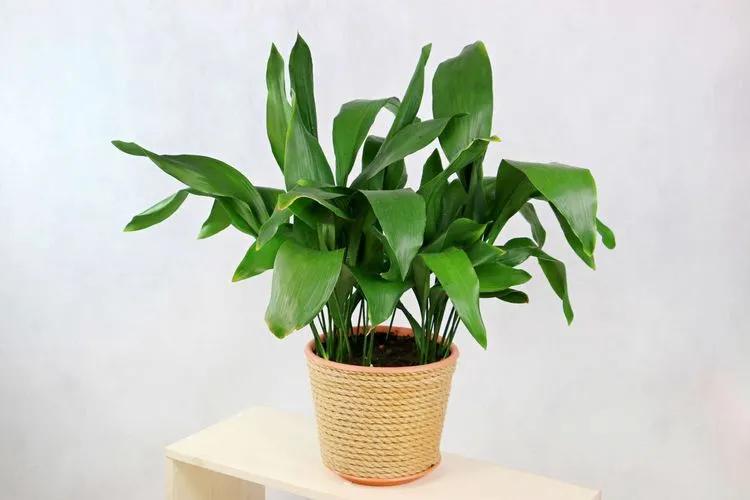
Fern
Botanical name: Polypodiopsida spp.
Description: Ferns are ancient plants, so it's no wonder they handle low-light conditions so well! They had centuries to adapt to all sorts of issues. These herbaceous perennials are cultivated as ornamental plants because of their beautiful foliage.
Difficulty: Easy.
Water requirements: Ferns usually need a sip once every two weeks.
Light requirements: Polypodiopsida can't stand direct light. That is why they thrive in the shade next to the north-facing windows!
Temperature & Humidity: Ferns can easily tolerate a lack of light at a temperature not lower than 15°C (59°F). However, you should never let them freeze! As for humidity, it's best to maintain it at a consistently high level. We recommend misting your fern from time to time.
Tips: Ferns depend on soil for their needs! Choose a well-drained, loose potting mix with peat and perlite for your green pet.

Snake plant
Botanical name: Dracaena trifasciata
Description: Dracaena trifasciata is an evergreen perennial widely grown for its dark green foliage. Its majestic leaves can reach up to 2.3-3 feet (70–90 cm) in length and about 2-2.4 inches (5–6 cm) in width.
Difficulty: Easy.
Water requirements: This tree needs watering about once a week in summer and once a month in the colder seasons.
Light requirements: As indicated by the list's name, Dracaena trifasciata likes north-facing windows! This plant needs bright diffused light throughout the day; however, it can thrive in low-light conditions. It won't harm the plant's health and will only affect speed of its growth.
Temperature & Humidity: Dracaena is quite tolerant to cold and needs moderate humidity. Your best bet is to maintain your green pet at the safe range of about 70-90°F (21-32°C).
Tips: The Snake plant doesn't need any frequent feeding. Dracaena is a sturdy greenie! However sad as it may sound, this tree has a weakness... It's root rot. To prevent this issue, you should avoid overwatering your plant. Keep it from sitting in liquid for too long.

Plants for the Northwest Window
Here is a list of some other pretty low-light greenies. These plants tolerate shade; however, they prefer northwest windows.
Peace Lily
Botanical name: Spathiphyllum spp.
Description: Peace Lilies are...not lilies at all. They are herbaceous evergreen perennials with beautiful white or green spathes. The leaves of this flowering species are pretty big in size, reaching up from 4 to 25 inches (12-65 cm) in length.
Difficulty: Medium.
Water requirements: Peace Lily needs watering about once a week. However, you should be careful not to let moisture sit on its leaves.
Light requirements: Spathiphyllum enjoys indirect sunlight. Place your Peace Lily next to a Northwest window and let it rest in the shade, away from the dangers of sunburn.
Temperature & Humidity: The best temperature for Spathiphyllum is 68-85°F (20-29°C). This delicate greenie is sensitive to cold weather and drafts, so keep a close eye on it! The humidity level should be moderate, with no drastic fluctuations.
Tips: Peace Lilies don't need a lot of fertilizer and prefer well-drained soil, preferably with peat moss, perlite, or loam.
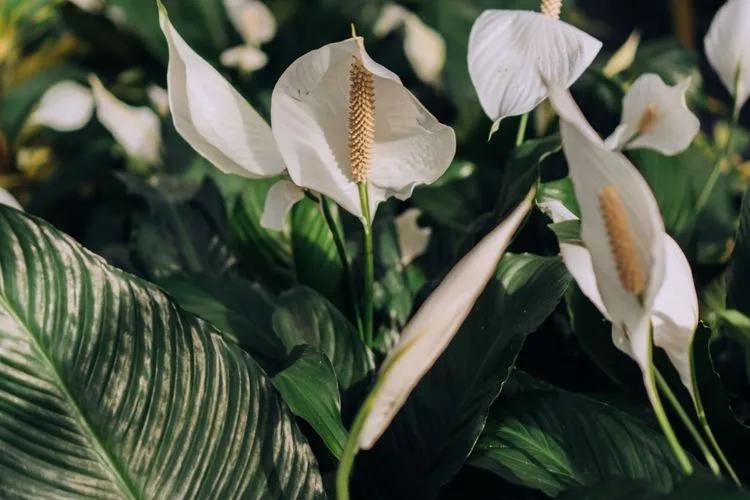
Grape ivy
Botanical name: Cissus rhombifolia
Description: Grape ivy is a trailing flowering plant from the Vitaceae family. This vine has lobed and pointed green leaves. It also produces small green inflorescences.
Difficulty: Easy.
Water requirements: You only need to water your Grape ivy when the soil (slightly!) dries out. Work on the habit of doing a weekly check on your green pet.
Light requirements: The Parthenocissus vine will thrive next to a northwest-facing window. It most enjoys moderate light.
Temperature & Humidity: If you try to maintain moderate humidity levels and don't let the temperature fall below 50°F (10°C), your Grape ivy will feel very comfortable at your home!
Tips: In order to thrive, Parthenocissus tricuspidata needs a potting mix with peat moss and perlite. Make sure the soil's pH is about 5.5-6.2.

Plants for the Northeast Window
Now let's take a look at our northeast window greenies! Even though these plants still enjoy the shade, they enjoy being just a little closer to the sunrise.
Umbrella tree
Botanical name: Schefflera spp.
Description: The Schefflera genus has a lot of family members! Usually, among this big family, Schefflera actinophylla is referred to as the "Umbrella tree." It is an evergreen flowering tree native to the rainforest. The shape of its radiating green leaves is its signature trait, which attracts many plant enthusiasts.
Difficulty: Hard.
Water requirements: Luckily, Schefflera is rather drought-tolerant. Make sure you feel the soil once a week and water your greenie thoroughly when necessary! It's best to use room-temperature water.
Light requirements: Umbrella trees can get sunburnt rather easily, so they prefer partial shade. You can also rotate your plant so that it gets equally warm on all sides and doesn't get scorched. Schefflera will feel great next to a northeast-facing window.
Temperature & Humidity: Schefflera requires relatively high humidity levels and a temperature of about 59°F(15°C)-70°F(21°C).
Tips: Umbrella trees prefer slightly acidic soil with a pH of around 6.0-6.5.
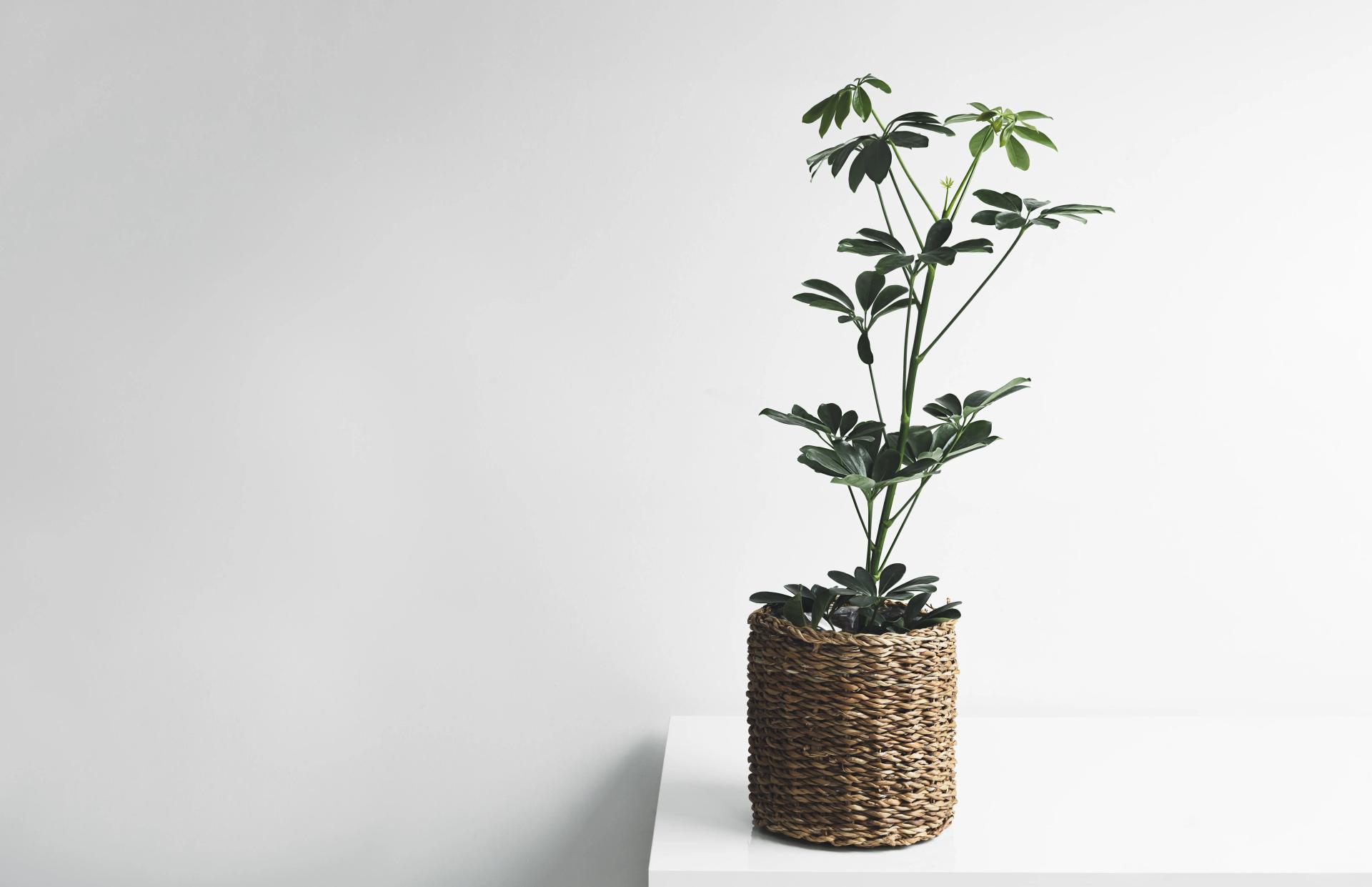
African Violet
Botanical name: Streptocarpus sect. Saintpaulia
Description: These flowering plants are not violets but definitely resemble them! Saintpaulias have rounded hairy leaves. They produce five-lobed purple, white or blue flowers.
Difficulty: Easy.
Water requirements: Use lukewarm water to give your Violet a sip whenever the soil's top 2 inches (5 cm) feel dry.
Light requirements: Saintpaulia thrives in indirect light next to northeast-facing windows.
Temperature & Humidity: Even though these flowering beauties prefer low light, they surely love warmth! The best temperature for African Violets is 65-75°F (18-23°C).
Tips: Get well-drained and loose soil for your green pets. Ensure the potting mix has some peat moss!

Tips on North-Facing Window Houseplants
We have prepared some tips to remember when taking care of your low-light greenies.
Make sure your plants get the right kind of light. Lighting can be of very different sorts. Some plants may prefer bright light; others could prefer diffused or medium light...Some of them can't stand direct sunlight! Each plant has individual needs, just like every person does!
Rotate the plant if necessary. When your green pet feels a bit under the weather, it could mean that it is illuminated unevenly and needs some moving around! Don't be lazy; give your plant a little swirl if it needs one.
Don't overfertilize. The majority of low-light plants don't need regular feeding. Do a little research and check what your greenie needs. Instead of fertilizing your plant, pay attention to the kind of soil, humidity level, and watering routine it requires.
Don't overwater. Shade-loving plants retain moisture surprisingly well. Before you drain another cup into your plant's pot, consider looking up its exact care requirements. Your greenie may need a sip less often than you expect!

FAQ
Are North-Facing Windows Good for Plants?
Yes, for some of them! Not all of our green friends love direct and harsh sun rays, even though all plants need a certain amount of light to survive.
What Is the Best Plant for a North-Facing Window?
Polypodiopsida spp. (ferns) make great north-facing window plants! These leafy beauties thrive in low-light conditions.
What Are the Worst Plants for a North-Facing Window?
Not all plants can tolerate a lack of direct sunlight! Some plants (such as Bird of Paradise, Jade plant, Ficus Audrey, Aloe vera, and many others) are extremely sun-loving and prefer south-facing windows.
How Much Sun Exactly Does a North-Facing Window Receive?
A north-facing window receives the least amount of sunlight. The light that comes from these windows can be bright; however, never direct. That's why a north-facing window is only a good option if you have a low-light plant.
Plants have evolved to do well in various environments. Those that prefer shade make for perfect, almost self-sufficient companions but still won't mind a careful check once in a while so that your friendship blossoms.
